Almost exactly two years after the company's release of ruby chocolate, Zurich-based Barry Callebaut has released a new product: WholeFruit Chocolate. Some statistics dropped about the product line include 70%, which is how much of the cacao pod is said to be wasted in the processing of cacao.
You may have seen some of the articles released after the launch party for the CacaoFruit Experience products in September, lauding it as "the future of sustainable chocolate production."
I'm not here to add more sunshine and rainbows to this launch (full disclosure: I wasn't there, nor have I tried the chocolate itself— yet), but to ask some questions I feel need to be addressed. Well, and tell you about an intriguing upcoming addition to the chocolate market.
While I understand that some of my questions may not be answerable right now, due to trade secrets, they've all been on my mind since the product launch was brought to my attention. So I'm putting them out there in the hopes that they'll have their own answers before the first WholeFruit Chocolate is sold to the public.
But first, some background on the whole project, and how it's a revolutionary release no matter the circumstances. 2023 Update: Blue Stripes Cacao, a NYC-based chocolate company backed by Barry Callebaut, now makes their own chocolates sweetened with cacao sugar, and sells a variety of other cacao-based sweeteners. Check 'em out.
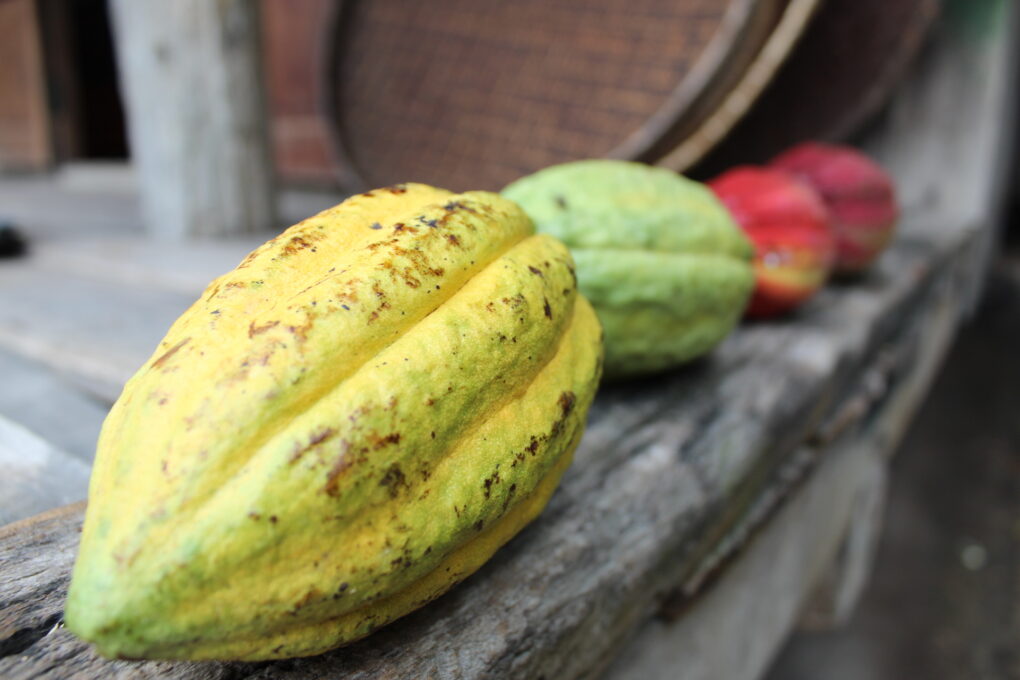
Jump To
What Is Cacao?
Cacao is the name of the tropical fruit, Theobroma cacao, from which chocolate is made. To make chocolate, cacao is harvested, removed from its shell, fermented, dried, shipped, sorted, roasted, peeled, and ground into chocolate, which is then tempered and made into treats for you to enjoy.
It's a long process, and while most of the cacao pod cannot be used to make chocolate, it has historically been used on the farm. In cacao growing regions the world over, farmers make cacao liquor from cacao juice dripped from fermentation boxes, and they cut up the cacao pods & spines to be returned to the soil as fertilizer or prepared for other local consumption.
Even in chocolate factories, on the craft chocolate level there are makers using the cacao husks to make cocoa tea, though that comes with its own set of concerns. So even though cacao production can be made relatively sustainable on a small scale, that's not the type of sustainability the Cacao Experience products are touting.
The revolutionary sustainability referred to in these press releases and articles is that of the cacao industry as part of global agriculture. As cacao farmers begin to turn to higher-paying crops, large chocolate manufacturers need to find a way to pay those farmers more so that they'll continue in cacao.
Taking away much of the post-harvest labor and still paying higher wages could be part of that equation. But the future of WholeFruit Chocolate also comes down to the consumers, and whether they even like the taste of cacao in its freshest form.
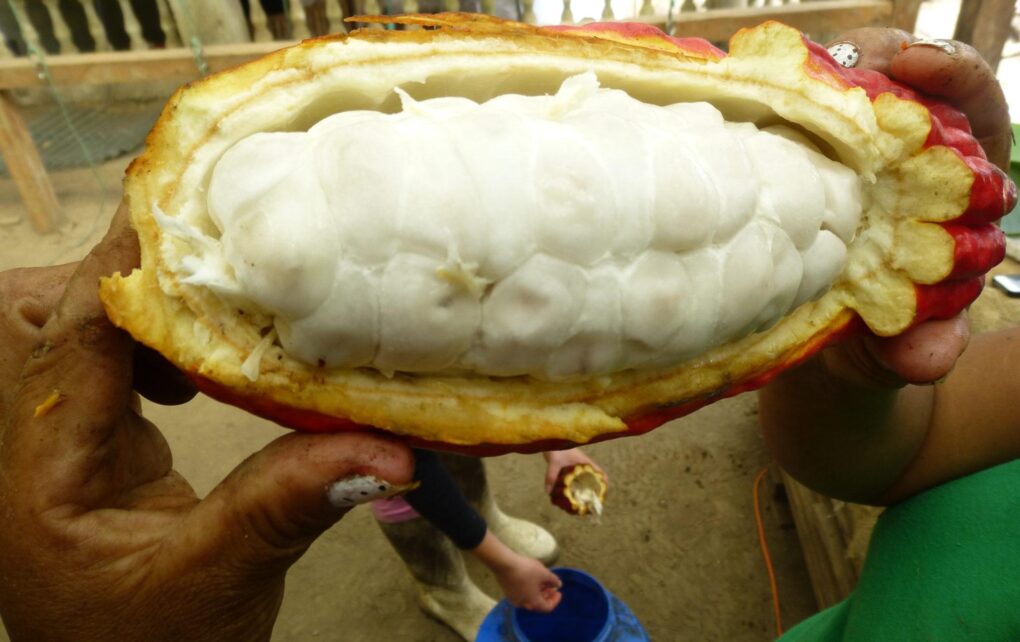
What Does Cacao Fruit Taste Like?
Fresh cacao pulp itself tastes to me like a sweet floral lychee fruit, more or less acidic depending upon the varietal (and likely the area in which it was grown). Around the world, many cacao producers are already using the juice & pulp locally, and for more than just liquor.
They turn it into wine, vinegar, honey, jam, and sparkling juice, each emphasizing a different characteristic of the fresh cacao fruit's flavor. The anatomy of a cacao pod is: outer pod, spine holding seeds in place, mucilage/pulp, and the seeds (also known as beans).
The beans themselves have the further anatomy of their husk, nibs, and germ, with only the nibs being consumed in a typical chocolate bar. So at the moment, only the nibs and a small portion of the juice is being consumed by the wider public.

CacaoFruit Experience Products: Infrastructure For Sustainability
Though I haven't bought a chocolate candy bar from the supermarket in over a decade, I have noticed their dramatic price increase, more than doubling since 2009. Part of this is just inflation, but the rest is due to rising overall costs of materials, including cacao.
In fact, in recent years big chocolate makers have made an effort to nurture cacao growing regions in Southeast Asia and the South Pacific, but to no avail. Even in more accessible regions, with all the work required, cacao just isn't worth it.
The premium cacao brand market is already over-saturated, so without other options for adding value to their crops, growing cacao for $1/kg isn't worth the effort. They could get many times that for the same effort by growing rubber or durian, so farmers either cut their trees or never start growing cacao in the first place.
Callebaut's new product line seeks to address this by adding that missing value. The main question now is how consumers will react to the products themselves. The fresh cacao fruit has a very distinct taste, not resembling chocolate even a little bit. This means that the taste of whole fruit chocolate, from flavor to texture, will be different from typical chocolate.
Though I've not yet tasted WholeFruit Chocolate myself, I imagine that the bars taste of cacao fruit in the same way that natural process coffee tastes like coffee cherries. Several years ago I saw a product on Kickstarter which parallels this undertaking in cacao, except with coffee. That product was coffee flour.
Coffee flour uses the leftover peels— cáscara in Spanish— to make a flour used in cooking and baking. In the years which have followed, cáscara products have only become more common and popular, especially cáscara teas, sodas, and concentrates.
The CacaoFruit Experience line seems to be the cacao version of this, albeit using more of the waste products. See below for some Instagram pictures of the new chocolates.
What Is WholeFruit Chocolate & Where To Buy?
WholeFruit Chocolate is a duo of products from the Barry Callebaut group: WholeFruit Bold and WholeFruit Velvety (which has added milk). The chocolate line is made entirely from cacao beans & pulp (plus milk in the Velvety bar), and will be made available in 2023.
At the moment, the company's made it available first to a select number of chefs and artisan chocolatiers, unlike their initial public release of ruby chocolate through Nestle Japan. Additionally, the CacaoFruit Experience line is aimed at a younger generation, just as ruby chocolate was.
But in this case it's geared towards those under-40 consumers, desiring a so-called "healthy indulgence." Yet for this reason, I think the WholeFruit Chocolate could actually become a big hit in East Asia, where chocolate consumption has become a matter of health.
The cacao pulp sugar used in the recipe was actually developed using an existing formula for making fruit sugars, and therefore couldn't be patented. This means that such a method could potentially be a way for cacao producers in far-away regions to find a use for their own waste pulp & fibers, unless that is, they choose to make something else out of it all.
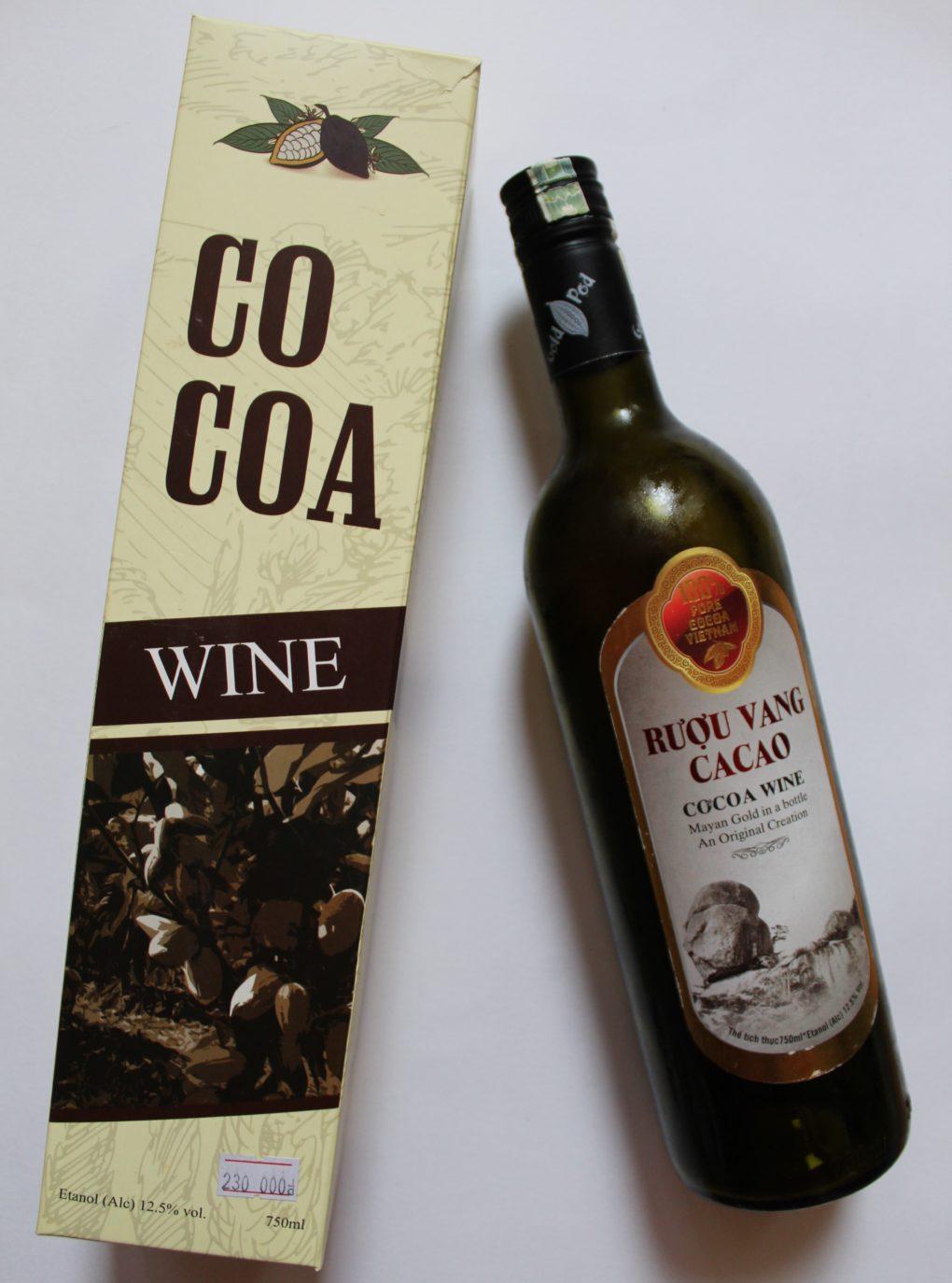
Mondelez's two CaPao products, announced earlier this year on Kickstarter (yes, seriously), were apparently the first two products under this CacaoFruit Experience line. Those products were Smoothie Balls and cacao fruit Jerky Strips, and they'll be available in Los Angeles, USA before the end of the year.
But as chocolate expert Clay Gordon remarked in his overview of the product line and his experience at the launch event, Callebaut has several other CacaoFruit Experience products set to launch. One of those products is a cacao juice, ostensibly similar to the few other cacao juices on the market.
The more interesting product Clay mentioned is a pod-based flour or crumble, which reminds me of the coffee flour mentioned above (made from the peel of the coffee cherry). That product was also launched on a crowdfunding platform, back in 2012, albeit with a much smaller budget and a much less environmentally-aware public.
I have even higher hopes for the cacao versions, set to roll out over the next couple of years. According to their press releases, the line of cacao-derived products will reduce waste on the farm by about 70%, a heavy number to live up to in action.
Questions About WholeFruit Chocolate
There's so much I want to know about WholeFruit Chocolate and the entire line of CacaoFruit Experience products. But first of all, I'm curious about how they intend to address the legal definition of their products as chocolate.
With the USA as their initial target market, and the use of the cacao husks as part of their chocolate line, they come upon the issue of legally calling their products chocolate. Up until now the minimum cacao percentage required to call something "chocolate" had been limited to the inner portion of the cacao seeds, and limited how much of a chocolate's cacao percentage can be made up of husk.
In fact, due to its low cacao percentage, Callebaut has had a tough time getting their ruby chocolate onto American shelves under the name "chocolate." So with the addition of cacao sugar to chocolate, it begs the question: does cacao sugar legally count the same as cacao nibs?
While these products stand to cater to a fairly large portion of the population, and certainly address some interests the public has long expressed (now where's my cacao pod emoji?!), just like in ruby chocolate it doesn't address 3 things.
- Where does the cacao come from?
- How is this helping to keep more of the economic & physical value of the crop at origin?
- What procedures are in place to ensure that all the bacteria present during fermentation isn't remaining on the juice and husks of the beans (normally composted or otherwise trashed before chocolate is made)?
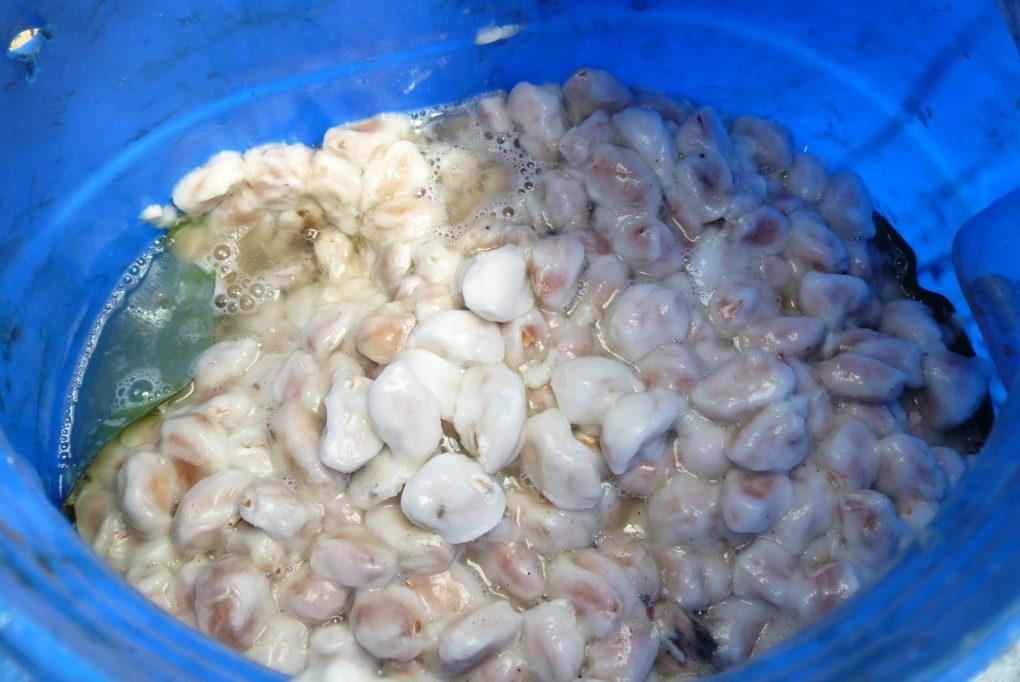
From a health standpoint, the selling point for the WholeFruit Chocolate concept is based on the limited nutrition facts provided by Barry Callebaut itself: 40% less sugar, 90% more fiber, and 25% more protein. But these claims aren't backed up by any (publicized) research, nor even which chocolate they're comparing it to.
Just like humans, whose body compositions come in an endless combination of fat, bone, muscle, and skin, it'd be helpful to know what baseline they're comparing it to. For example, the 60% WholeFruit Velvety will already have 40% less sugar than a 42% or 43% milk chocolate.
Clay noted that Callebaut is paying above dry-weight equivalent for whole cacao pods, but the market price in different regions varies hugely, as does the truly fair price in those places. So wherever the cacao is sourced, are the CacaoFruit Experience products made in the same place and employing local people (adding more value to that local economy & lessening the products' impact upon the environment)?
What is the sanitation protocol for those pods, and is there any standardization of the yeasts carrying out the fermentation of the seeds, for when the process is repeated elsewhere?
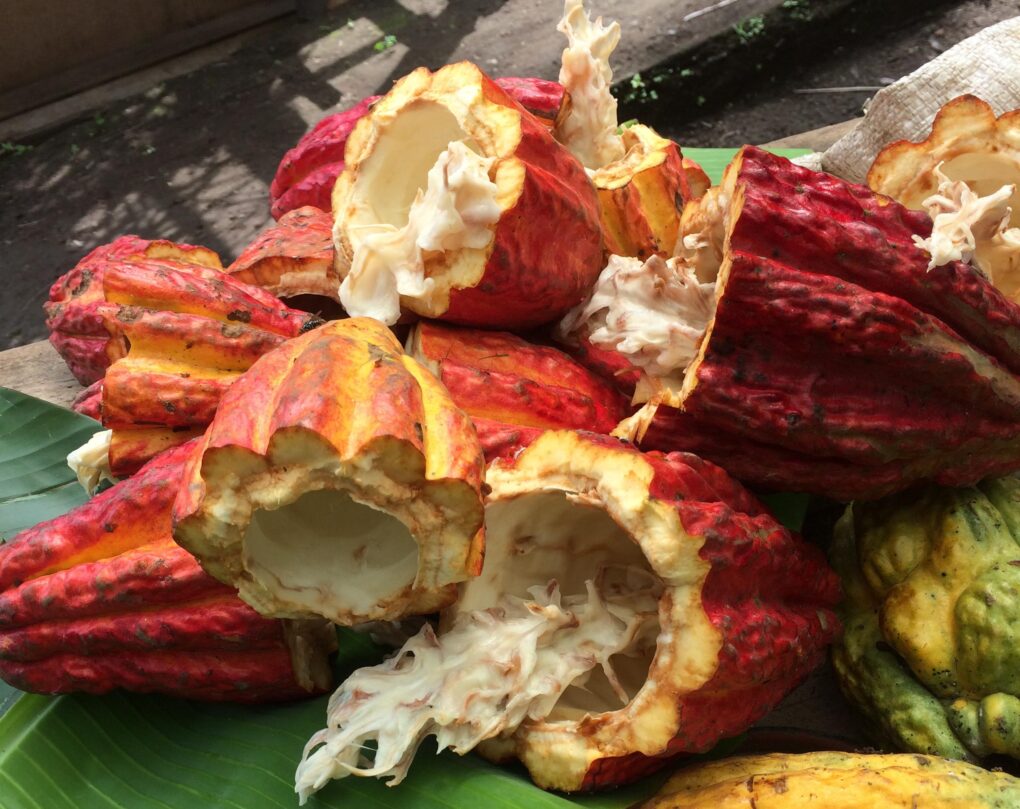
A few more questions to consider:
- How is cacao sugar produced?
- What is the nutritional content of cacao sugar, and is it comparable to other fruit sugars, such as monk fruit or coconut sugar (each derived differently)?
- What is the tempering experience like on these products (temperature, viscosity, etc.)?
- Will home chocolatiers be able to buy larger amounts of the WholeFruit Chocolates to bake with at home, as they can with other Callebaut chocolates, or will these only be licensed?
- What about cadmium in all of the products?
Most of these aren't pressing questions (& many are just plain chocolate geek-outs), but when all Callebaut tells the public about such a huge step forward is shared in a single press release, I guarantee I'm going to have some questions.
I'm confident that most of these questions will be answered in the coming months, but while we as consumers become more connected to our foods, we need to know we're asking the right questions.
Again, I highly recommend you go read Clay's piece on his experience with the launch, as it's of much more substance than anything else you'll find out there (including the brand's own website, unfortunately). He includes more stats gleaned from interviews with Callebaut executives, and some insight into the taste of upcoming CacaoFruit Experience products.
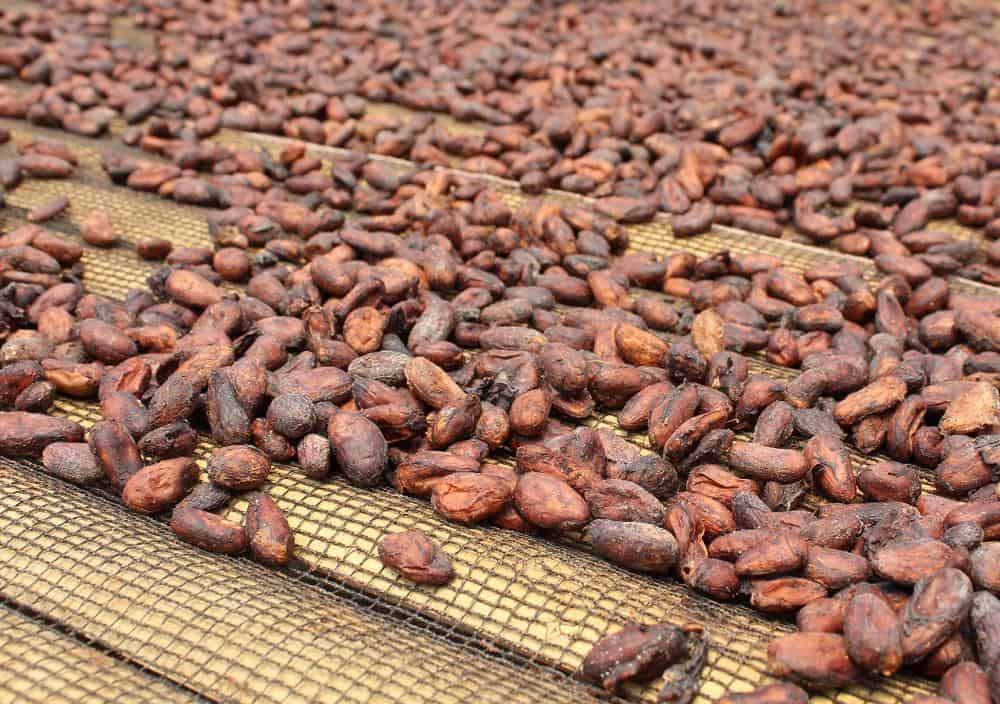
So... Is WholeFruit Chocolate Sugar-Free?
This is important to note: no, it's not.
WholeFruit Chocolate is not sugar free, because it has an impact upon your blood sugar (as a 100% chocolate bar wouldn't). Cacao sugar is still fructose, itself a simple sugar, treated by your body as nearly the same as refined white sugar.
Do NOT consume this chocolate like a fruit you can eat any amount of— it's still chocolate and should be treated as such. But I admit that I'm impressed by Barry Callebaut's continued innovation as a company. Hopefully some of my many lingering questions about WholeFruit Chocolate will be answered sooner rather than later.
I also hope to see some of these manufacturing methods able to be used by cacao producers around the world to add to their overall income, rather than allowing Callebaut to set up more processing facilities around the world which siphon potential value from small farming communities. I hope to see them do right by farmers and the environment, for chocolate's sake.

















Robert
Call me a cynic, but based on their attitude towards humans rights, quality and transparency, I don’t see this whole fruit chocolate as an altruistic attempt to help farms or offer consumers a delicious virtuous new product. It looks like a way to reduce labour costs while attempting to develop a new product.
I believe cocoa husks are removed to improve flavour and texture, also to reduce the amount of cadmium ingested. I believe cacao is fermented to improve flavour. I’d love to taste whole fruit chocolate but expectations are incredibly low. Curious to see just how bad it is, and to ascertain just how stupid callebaut think consumers are. After ruby, who knows?!
Max
Robert, I certainly agree with you on the need to be more cynical of the "innovations" of big companies like Callebaut, in particular because this product is built upon a large accumulation of previous innovations by smaller companies. This is certainly a complex topic, and I'll work to keep this article updated, but I also remain skeptical of the real intentions behind the product line. I believe they do use fermented cacao, though; they just use the husks, as well. I'm also curious, and will try it once it comes out... but honestly, I think I already know what to expect after tasting several of the other projects off of which the line was build. But we shall see.
Garfield
Great information, questions and comments. Thanks for sharing.
Max
Thanks, Garfield! I appreciate you reading. 🙂